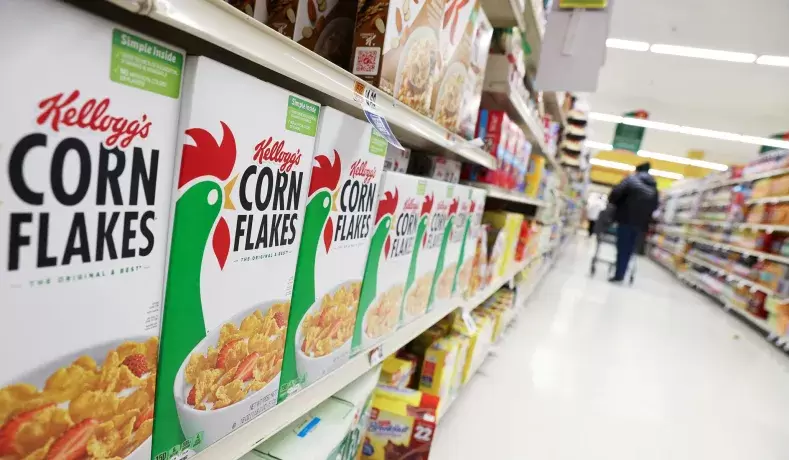|
Originally published at National Review Online.
Few government programs are regularly up for debate as much as the Supplemental Nutrition Assistance Program (SNAP), commonly known as food stamps. The latest controversy is whether the food purchased by its recipients should be restricted to healthier diets that exclude snacks and sodas. While this approach seems reasonable, its tradeoffs necessitate SNAP reforms that balance keeping this costly program temporary for recipients while supporting their agency and choice for long-term self-sufficiency. Enacted in its current form in 1964 as part of President Lyndon B. Johnson’s War on Poverty, SNAP has evolved into one of the nation’s most extensive safety-net programs, assisting more than 42 million Americans at a cost to taxpayers of $113 billion in 2023. With the Farm Bill coming up for reauthorization by Congress on September 30, it’s time to consider improvements for SNAP and other programs in the existing legislation. The Farm Bill has included funding and rules for commodity programs since it was first enacted in the Agricultural Adjustment Act of 1933. But nutrition (primarily through SNAP) is expected to account for 84 percent of the $1.5 trillion spent on programs in the bill over the next decade. The free-market approach to SNAP reform should be rooted in economic freedom and individual empowerment and emphasize the importance of preserving flexibility in food purchases while promoting self-sufficiency and work for recipients. This perspective draws inspiration from the teachings of free-market economists such as Milton Friedman, who championed the idea of individual choice in economic decision-making. Since its inception, SNAP has undergone numerous reforms and expansions, reflecting shifting societal attitudes and economic realities. Originally conceived as a program to provide recipients quick, temporary relief from hunger and malnutrition, SNAP has become a permanent fixture for many people experiencing economic hardship. For example, a household of four — to be eligible, its gross monthly household income must not exceed $3,250 — will receive a maximum monthly allotment of $973 per month. Central to SNAP reform should be the concept of self-sufficiency. SNAP can honor recipients’ dignity and agency as they navigate their way through the challenges posed by poverty by allowing them to make purchases based on their preferences and circumstances, even if that includes snacks or soda. This flexibility respects recipients’ autonomy and acknowledges their capacity to make informed decisions about their dietary needs. This can also help reduce the incentive for recipients to sell SNAP allotments to others and purchase items they prefer more. We should also acknowledge that these food subsidies distort the grocery market. The restrictions on what SNAP recipients can purchase today drive them to specific items such as milk. The artificial boost in demand then drives up the price and sometimes the profit margins for those items, thereby making them more expensive for everyone while lining the pockets of a few suppliers. Because SNAP raises some prices for Americans and adds to the national debt, contributing to higher interest rates and inflation, we need a better-functioning program or we need to end it. In addition to promoting self-sufficiency, a flexible SNAP program should align with work to reduce poverty so recipients use the program temporarily as intended. Rather than imposing top-down restrictions on food choices, as some are trying to do, policy-makers should focus on unleashing opportunities for recipients to improve their circumstances through education, training, and employment. These steps have a proven record of supporting long-term success. Furthermore, a streamlined approach to SNAP administration would improve the program’s effectiveness while minimizing waste and abuse. By reducing bureaucratic hurdles, we could help ensure that the taxpayer dollars that fund the program are used more efficiently to support those in need. As policy-makers contemplate reforms to SNAP with the upcoming Farm Bill renewal, they must recognize the program’s historical context and evolution. Originally conceived as a temporary measure for recipients to address hunger and malnutrition, SNAP has become a permanent, costly safety net for many recipients. By preserving flexibility in food purchases and empowering recipients with more opportunities to work and move out of poverty, we can support individual freedom and decision-making, two fundamental elements of a vibrant and prosperous society. The Farm Bill presents an opportunity to do so through meaningful reforms to SNAP that help strengthen Americans’ resolve to overcome obstacles. The above reforms would make the help provided by SNAP temporary and flexible, and complement it with a pathway to work. There should also be a push to reduce bureaucratic bloat by streamlining the program and arranging for periodic independent efficiency audits by third-party private firms or a state auditor, so that its funds only go to the people they are intended for. Moreover, adhering to more free-market approaches across the economy — with less government spending, lower taxes, and reduced regulation — can provide more opportunities for people to get jobs and move out of poverty forever. This will allow people to flourish rather than being dependent on government programs that discourage self-sufficiency. As we navigate the complexities of food insecurity, let us heed the wisdom of free-market economics and empower recipients to chart their path to a brighter future.
0 Comments
Leave a Reply. |
Vance Ginn, Ph.D.
|


 RSS Feed
RSS Feed